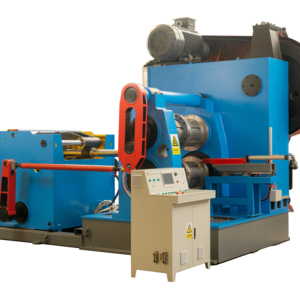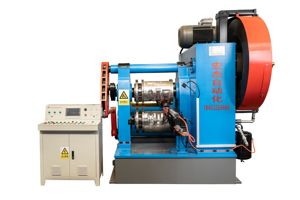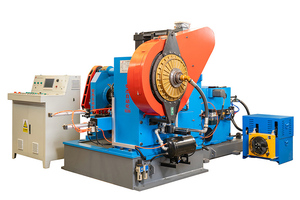
All categories
Featured selections
Trade Assurance
Buyer Central
Help Center
Get the app
Become a supplier

(1394 products available)













Market Overview: The spin cast machine market is experiencing steady growth, contributing to the broader industrial machinery sector. As of 2024, the global market for die casting machinery, which includes spin casting machines, grew from USD 3.10 billion in 2023 to USD 3.34 billion and is projected to continue expanding at a CAGR of 7.98%, reaching USD 5.31 billion by 2030, according to 360iResearch™. This growth is driven by increasing demand across industries such as automotive and aerospace, where precision and efficiency are paramount. Additionally, advancements in casting technology are enhancing production capabilities, enabling manufacturers to meet evolving consumer demands for quality and sustainability.
Industry Insights: The demand for spin cast machines is significantly influenced by the rise in automation and the need for cost-effective production methods. As companies strive for operational efficiency, the adoption of spin casting technology is becoming more prevalent. The U.S. market remains a key player, with a strong emphasis on innovation and manufacturing excellence. Emerging markets in Asia-Pacific, particularly China and India, are also exhibiting robust growth, driven by rapid industrialization and investments in advanced manufacturing technologies. However, challenges such as high initial investment costs and the requirement for skilled labor remain critical pain points for potential adopters. Addressing these issues through targeted strategies will be essential for stakeholders aiming to capitalize on the opportunities within the spin cast machine market, as indicated by the broader trends in related machinery sectors.
With the advancement of technology, various types of machines for spin casting have been invented and are now in use. These machines help to produce metal products as per the needs and specifications of the customers.
Capacity
These spin casting machines can have make-capacity ranging from small to large amounts per hour. It is determined by the amount of time required to cast each one and ease of machine control. Smaller machines may manufacture 10 to 20 pieces per hour while larger industrial models, with greater skill levels at handling the machine, could produce 50 to 100 per hour or more.
Die Size
Spin casting dies normally have a range from 2 inches to 12 inches (5 to 30 cm) in diameter. Larger die sizes allow for the production of bigger pieces, but they also cause the machine to become larger in size.
Materials Compatibility
Some machines have very limited capabilities and are only able to work with some metals. Others can handle a large variety of alloys including zinc, aluminum, brass, bronze, and even some plastic polymers. Details must be found to work out what material the machine can handle.
Power Source
More advanced spin casting machines are electrically driven, while spin casting machines without much technology are human operated, that is, through foot pedal control. Partially automated machines may use pneumatic pressure to spin the casting. Pneumatic power sources require compressed air systems that may use air hoses and other equipment. Fully automated machines use electricity. Advanced electrically powered machines may have variable speed controls and other ways to control things precisely. Machines that are fully automatic will produce at least 10 times greater production capacity than those that are not fully automatic.
Regular Cleaning
It is important to get rid of any metal residue, lubricant build-up, or debris as quickly as possible after each operation, to keep the machine in tip-top and cast its best condition. Dedicated cleaning brushes, solvents, and products are often provided to help maintain the machine's quality over the longer term.
Lubrication
Any moving parts should be oiled regularly according to instructions and parts diagrams, including bearings, chains, and slides, to ensure smooth operation.
Die Maintenance
It is necessary to clean the casting dies thoroughly after each use and to lubricate them as appropriate to avoid any casting-related issues that could arise in the future, such as jamming or uneven wear.
Electrical and Pneumatic Checks
For the more automated and longer-production machines, it's required to check the electrical connections, as well as the air hoses and fittings, and to inspect the variable speed drive to ensure everything is in good working order and nothing is broken.
The spin casting machine has many applications in different industries. Here are some common used scenarios where a spin casting machine is used.
Making metal parts with details
Spin casting machines are useful for creating smaller metal parts with lots of details. This includes parts such as jewelry, medallions, automotive trim, and dental devices, to name a few. For example, dental foundries often use spin casting machines to make prostheses, crowns, bridges, and other dental tools with high precision.
Creating prototypes quickly
Spin casting machines are often used to make rapid prototypes of parts to test ideas and designs without spending a ton of money. Companies can quickly make prototypes of products and test them using a spin casting machine.
Making plastic parts at a low cost
Spin casting machines are great for making plastic parts that don't cost a lot. Companies in the automotive, aerospace, healthcare, and consumer goods manufacture use spin casting to make plastic parts such as housings, knobs, and seals.
Medical instruments
The medical industry uses spin casting machines to make high-precision medical instruments. These instruments may include surgical tools, diagnostic devices, and implantable devices, to name a few.
Aerospace parts
In the aerospace industry, spin casting machines are used to create lightweight but strong aerospace parts that are durable. The spin casting machine makes complex parts like engine components, housings, and structural parts while maintaining tight tolerances.
Sports equipment
Manufacturers of sports gear use the spin casting machine to make equipment for different games and sports. They can produce high-quality, custom-fit sports equipment quickly and cost-effectively with a spin casting machine.
Making tooling
Tooling and fixtures used in assemblies, machining, and quality control often involve spin casting. The tooling is cheap, quickly made, and used for small-scale production runs.
Before investing in a spin casting machine, it is best to understand the industry's needs to make an informed choice. Apart from looking at the quality of castings created with the machine, manufacturers also survey the capabilities of the equipment.
It is a good idea to make a list of all the parameters crucial to production and refer to it when negotiating with potential suppliers of spin casting machines. A thorough comparison with the list will help to make a final decision with confidence.
Q1: What materials can the spin casting machine work with?
A1: The spin casting machine is primarily designed to cast metals, alloys, and certain composite materials. While it excels in these materials, its adaptability to other compositions hinges on the specific configuration and capabilities of individual machines.
Q2: Are there any surface finish options available for spin casting?
A2: Indeed, the beauty of spin casting lies in its versatility. Apart from the surface finishes mentioned earlier, sandblasted, anodized, brushed, polished, or even electroplated variants, there are myriad other surface finishes available. They can be tailored to the specific needs of the component or the aesthetic requirements of the final product.
Q3: What are the shapes and sizes achievable by spin casting machines?
A3: The beauty of the spin casting technique lies in its versatility. The method can create complex geometries, including undercuts, intricate patterns, and thin-walled structures. Additionally, there are no limitations for the component's size. However, the precision and quality of casting decrease as the size increases.
Q4: How much does a spin casting machine cost?
A4: Unlike traditional methods of casting that are time-consuming, expensive, and labor-intensive, the spin casting technique is relatively economical. The spin casting machine price is affordable for many businesses. However, it is essential to note that the price can vary based on the machine's model, size, capacity, and other features.
Q5: How durable are spin cast parts?
A5: Spin casting offers excellent dimensional accuracy and surface finish. The parts produced are durable and strong, often stronger than those made using sand casting.